Phylum Chordata Rank Species | Scientific name Totoaba macdonaldi Higher classification Totoaba Order Perciformes | |
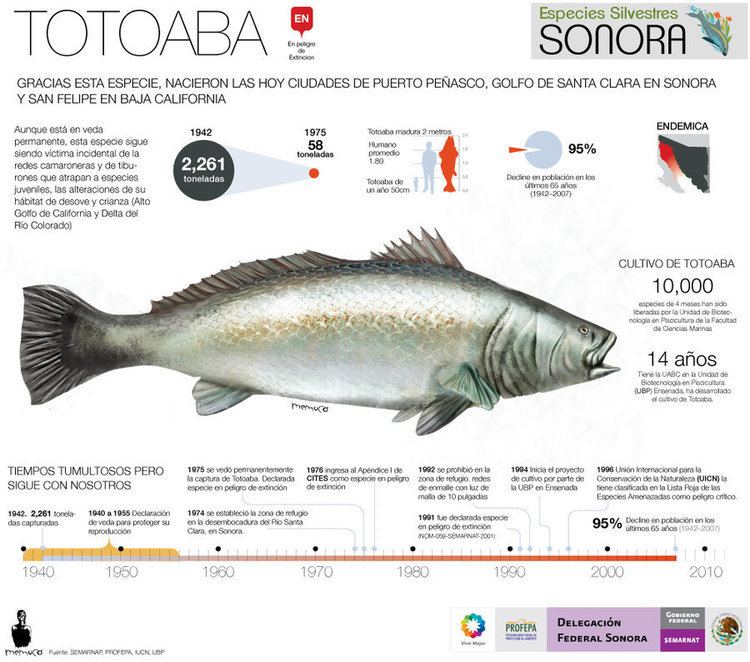 | ||
Genus TotoabaA. Villamar, 1980 Similar Vaquita, Porpoise, Phocoena, Drums, Baiji | ||
Totoaba un pez m s caro que la coca na
The totoaba or totuava (Totoaba macdonaldi) is a marine fish, the largest member of the drum family Sciaenidae, that is endemic to the Gulf of California in Mexico. It is the only species in the genus Totoaba. Formerly abundant and subject to an intensive fishery, the totoaba has become rare, and is listed on CITES, the IUCN Red List of Threatened Species, and the Endangered Species Act (ESA).
Contents
- Totoaba un pez m s caro que la coca na
- La totoaba gigante del alto golfo de california
- Life cycle
- Threats
- Spearfishing
- Poaching
- Conservation
- Commercial trade
- References
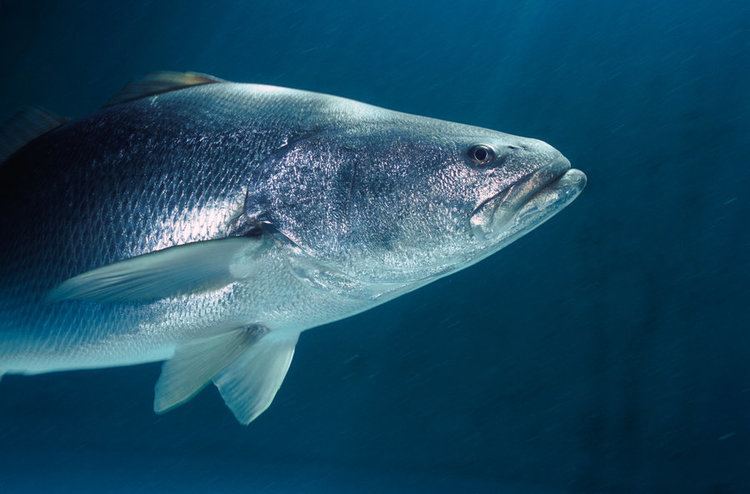
La totoaba gigante del alto golfo de california
Life cycle
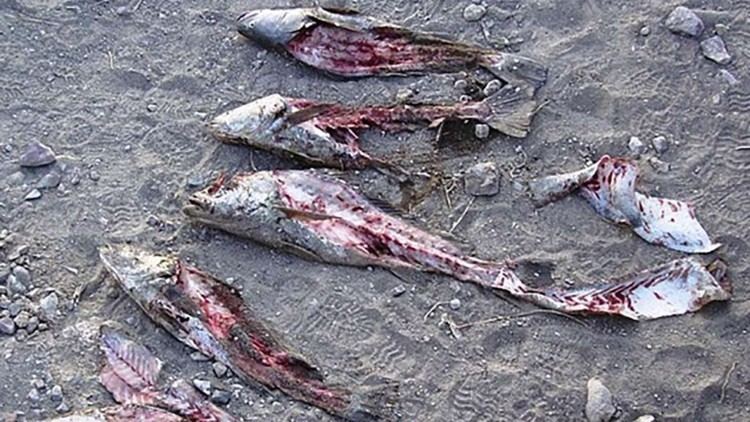
The totoaba can grow up to two metres in length and 100 kg in weight. Their diet consists of finned fish and crustaceans. Individuals may live up to fifteen years, but sexual maturity is usually not reached until the fish are six or seven years old. As totoaba spawn only once a year, population growth is slow, with a minimum population doubling time of four-and-a-half to fifteen years. The totoaba spawn in the Colorado River delta, which also serves as a nursery for the young fish.
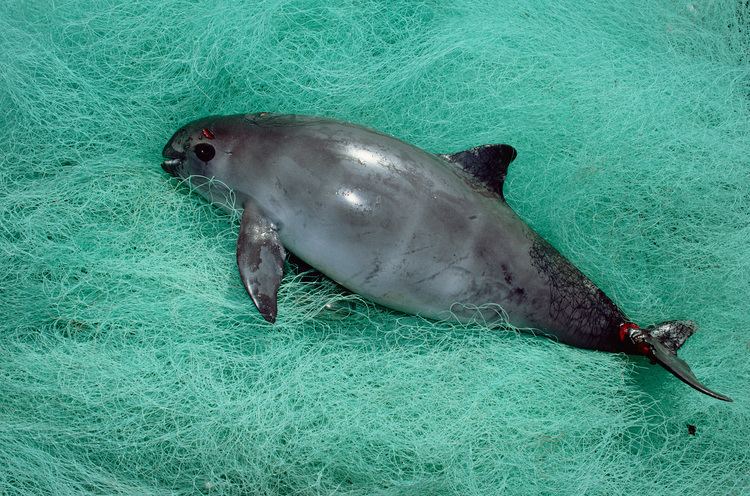
The totoaba population is found in two distinct groups. Larval and juvenile stages occupy the Colorado delta, while the adult breeding population lives for most of the year in deeper water towards the middle of the Sea of Cortez. The adult population migrates to the Colorado delta in April and May to spawn. One-year-old totoaba are metabolically most efficient in brackish water of about 20 ppt (parts per thousand) salinity, a level that occurred naturally in the delta before the diversion of water from the river that occurred in the middle of the 20th century.
Threats
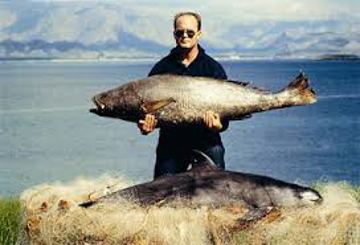
The diversion of water from the Colorado River within the United States leaves little or no fresh water to reach the delta, greatly altering the environment in the delta, and the salinity of the upper Sea of Cortez. The flow of fresh water to the mouth of the Colorado since the completion of the Hoover and Glen Canyon dams has been only about 4% of the average flow during the period from 1910 to 1920. This is considered to be a major cause of the depletion of the totoaba population. With the loss of the fresh water flow from the river, salinity in the delta is usually 35 ppt or higher.
Spearfishing
Back before the ban on the totuaba in 1975 there was a spearfishing world record for the species set by a spearfisherman named Hal Lewis of San Diego, CA. The fish was caught in Guaymas on 11/20/1962 and tipped the scales at 33.8 kg or 74.5 lbs. The record still stands today due to the closing of the fishery.
Poaching
Another threat to the totoaba is from human poaching: the swim bladder is a valuable commodity as it is considered a delicacy in Chinese cuisine; the meat is also sought after for making soups. It can fetch high prices – 200 bladders may be sold for $3.6 million at 2013 prices – as it is erroneously believed by many Chinese to be a treatment for fertility, circulatory and skin problems. The illegal totoaba fishery also threatens the vaquita, a critically endangered porpoise endemic to the northern Gulf of California that appears to be doomed to extinction unless the setting of gillnets in its habitat can be halted.
Conservation
On 16 April 2015, Enrique Peña Nieto the President of Mexico announced a program of rescue and conservation of the vaquita and the totoaba, including closures and financial support to fishermen in the area. Some commentators believe the measures fall short of what is needed to save the vaquita.
Commercial trade
Commercial fishing for totoaba began in the 1920s. The catch reached 2,000 metric tons in 1943, but had fallen to only 50 tons in 1975, when Mexico protected the totoaba and banned the fishery. Anecdotal evidence suggests that totoaba were very abundant prior to the start of the commercial fishery, but there is no hard evidence of natural population size. Recent studies indicate that the totoaba population has stabilized at a low level, perhaps a bit bigger than when the commercial fishery was banned in 1975. Totoaba are still caught, as by-catch in fishing for other finned fish and for shrimp, and in illegal fishing for totoaba directly. Some totoaba are illegally exported to the United States, often misidentified as white seabass. The government of Baja California has authorized commercial raising of totoaba in fish farms.
